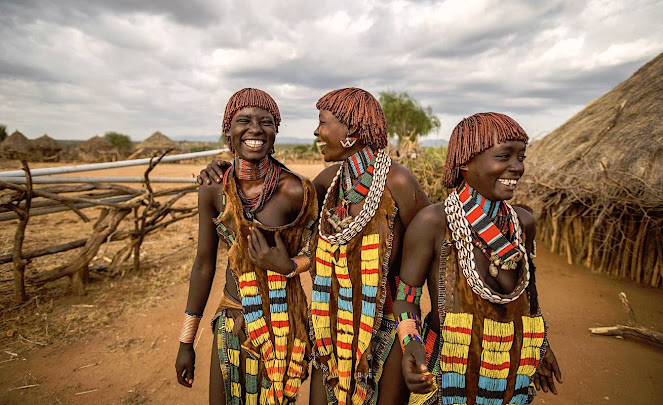Previously, I explored the wider impacts of building the Gibe III dam on the hydrology and ecology of lake Turkana. One of the reasons why the dam was built was not to not only generate hydropower, but to be used for irrigating large-scale plantations, which I will investigate here and its impact on the indigenous people in Kenya.
KURAZ SUGAR PLANTATION
The function of the Gibe III dam
is intricately linked to the commercially irrigated agricultural plantations
that are being extended in the lower Omo basin. The Gibe III will control
floods and increase dry season flows, establishing more consistent flows that
are a source for irrigation (Fong
2014). The development of the Kuraz Sugar plantations -projected to cover
161,285hectares (ibid) -illustrates the Ethiopian Government’s Growth and
Transformation Plan, prioritising the cultivation and processing of
sugarcane. The development of the plantations, as well as proposed cotton
schemes, are expected to further reduce the levels of lake Turkana due to
increased abstraction for irrigation (Hodbod et al. 2019).
The Kuraz sugar plantations may require 50% of the Omo river, varying according
to the efficiency of irrigation, which inextricably impacts lake Turkana
because of reduced flows (Avery
2012).
Research studying the changing
aspects of pesticide concentrations and physicochemical parameters discovered
that for many of the physiochemical parameters -pH, potassium and iron, over
50% of the values were found above the determined threshold under Ethiopian
standards for drinking water (Teklu et
al. 2018). A risk assessment was also carried out that found that a
chemical in pesticides posed a high acute risk to aquatic organisms (ibid). As
you can see here, not only is the construction of the dam itself harmful to the
ecosystem of the lake, but also the use of the dam for irrigation of
large-scale plantations. As aforementioned, the reduction in ecology effects
the vulnerable indigenous agro-pastoralists in Kenya that are heavily dependent
on the Omo-Turkana basin.
PEOPLE OF THE OMO VALLEY
Watching this short documentary
put into perspective that effects that occurred due to the cultivation of the
Omo valley. The lowlands of the Omo valley is home to approximately 100,000
people whose livelihoods depend on pastoralism, fishing and food-retreat and
rainfed farming (Turton
1988) and are now greatly affected by the infrastructural developments of
the dam, plantations, and associated infrastructures.
Indigenous agro-pastoralists rely
on Turkana’s waters to provide fish for food as the regular droughts in this
desert region make it difficult to sustain productive land for livestock. However, as I mentioned in the last
blog, dam construction reduced fisheries populations. Fish rely on flood
pulses to breed and transport key nutrients, but the hydro-ecological impacts
of the Gibe III mean that nutrients concentrations declined and there are less
pulses due to more consistent flows, limiting the population of fisheries that
the locals are so reliant on (Spruill
2019). Collective consequences of low flows and irrigation for the
plantations will cause a dramatic
decline in the land available for fishing, livestock and farming for all
the different subsistence, indigenous groups. In fact, Felix Horne, senior
Africa researcher at Human Rights Watch, stated
“the predicted drop in the lake levels will seriously affect food supplies in
the [Omo-Turkana basin], which provide the livelihoods for half a million
people in both Kenya and Ethiopia.”
RESETTLEMENT?
Having unheeded to research into
the ramifications of development-forced dislocation and resettlement of these
indigenous tribes, the Ethiopian government went ahead with ‘resettlement’
plans, jeopardising possible environmental and social disasters (Turton
2018). The already scarce resources of this desert are becoming more and
more scare, with repercussions of the dam’s construction drastically impacting
the food supply for more than 100,000 people (and that is just the indigenous
people). This will likely result in conflicts in the area which can already
been seen with the agricultural regions shrinking from the plantations meaning
the tribes are having to work with less land (Carr
2012).
A 73-page
report details how the Ethiopian government’s security forces are displacing
communities from their traditional lands using brutality and coercion
techniques sin compensation. The YouTube documentary even details the bloodshed
of bullets, the violence against children and especially females by the security
forces.
The establishment of sugar
plantations, accompanying infrastructure and the construction of the dam
created disastrous ramifications for the indigenous tribes in the Omo-Turkana
basin. Not only are they being violently displaced from their traditional
lands, but the hydro-ecological effects of the dam’s construction and
irrigation abstractions are causing extreme consequences for fisheries populations,
access to clean drinking water, and water for their own small-scale irrigation
for livestock and pastoralism. The impacts of mismanagement within
transboundary basins are clear. While local populations benefit from the
hydropower, indigenous populations’ livelihood is being challenged, threatening
their ability to eat. An Integrated Water Resources Management (IWRM) scheme
would fare better, including all stakeholders in discussions with full autonomy
over themselves. IWRM is a ‘way of looking at problems with a view to solving
them through transparent and inclusive decision-making processes’ (Van
Der Zaag 2005:867). A fellow blogger wrote an interesting
piece that delves into IWRM that I think you should read.


Again, this is a quality post filled with impressive statistics and a wide range of statistics. I love how you have focused on Ethiopia again as this gives a lot more detail to the country, which is incredibly hard to capture in a single blog post. Keep up the great work!
ReplyDeleteVery informative! Looking forward to the next post
ReplyDeleteSo informative Maha, I didn't even know of the indigenous people and how much the dam could be of use to locals.
ReplyDeleteGreat assessment in this post and the previous one of the variety of outcomes that water strategies, such as dams, can have and you do well to stress the importance of better integrating a wide range of stakeholders. It would have been interesting to see if you felt such outcomes were a common occurrence in Africa or if this was a particularly unique example.
ReplyDelete